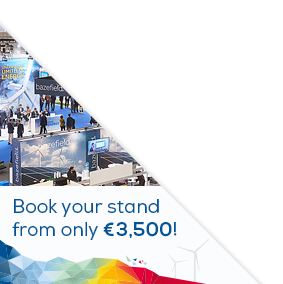Posters
Siblings:
ProceedingsProgrammeProceedingsSpeakersPostersContent PartnersElectrification StageMarkets TheatreR&I ActivitiesStudent DayProgramme Committee & abstracts reviewersPresenters dashboardCome meet the poster presenters to ask them questions and discuss their work
We would like to invite you to come and see the posters at our upcoming conference. The posters will showcase a diverse range of research topics and provide an opportunity for delegates to engage with the authors and learn more about their work. Whether you are a seasoned researcher or simply curious about the latest developments in your field, we believe that the posters will offer something of interest to everyone. So please, join us at the conference and take advantage of this opportunity to learn and engage with your peers in the academic community. We look forward to seeing you there!

PO015: Shock detection using TripleCMAS
Tim Gazdic, Data analyst, Ventus Engineering GmbH
Abstract
Moving objects inside the blades are very common in a Wind Turbine's rotor. Debris can be moving inside a blade such as glue, composite parts, screws, and more. They are mostly due to missed or delayed maintenance, carelessness during installation, loosening of parts due to turbine vibrations, etc… Over time these moving objects can wear the inside of the blade and become critical to the integrity of the blade. The intensity of the shocks depends on the behaviour and mass of the moving objects. The Critical Components Condition Monitoring, fault detection and instant Alarm System (TripleCMAS) technology provides information based on data collected by 3-axis accelerometer sensors located inside the rotor. Three accelerometers are installed inside of the individual wind turbine blades identically. Each sensor is placed the same distance from the centre of rotation, with one sensor-axis aligned along the length of the blade, one sensor-axis aligned with the blade-flapwise axis, and the last sensor-axis aligned with the blade-edgewise axis. This system can detect the presence of an object as small as a single screw when the Wind Turbine is in rotational motion. These small objects going back and forth towards the tip of the blade have great potential energy and the object can free fall from the tip of the blade to a hatch, for example, creating large and repetitive shocks.







